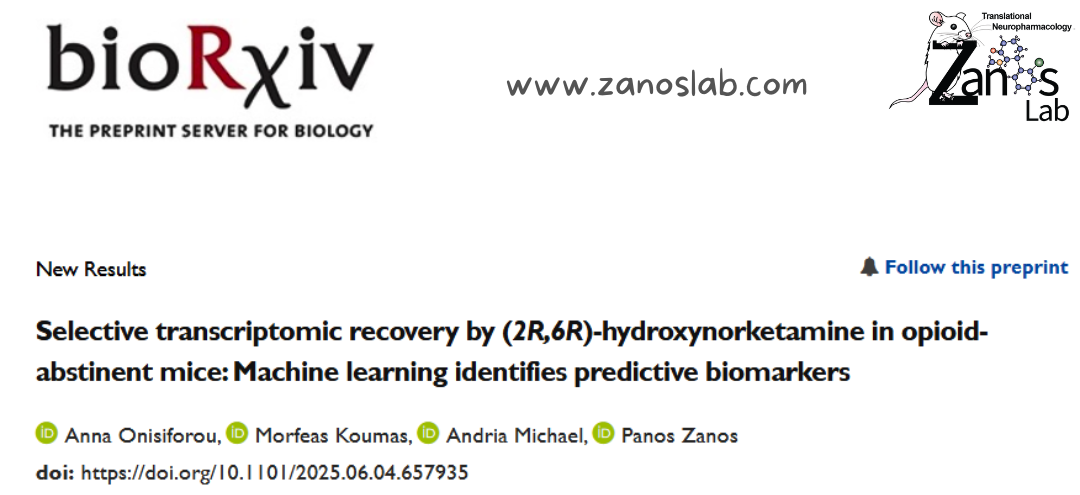We are excited to share our latest research led by Dr. Anna Onisiforou with contributions from Dr. Andria Michael and Mr. Morfeas Koumas now available as a preprint on bioRxiv, titled “Transcriptomic mapping of the ventral hippocampus reveals (2R,6R)-hydroxynorketamine as a potential therapeutic agent for opioid abstinence.” This study investigates the therapeutic potential of (2R,6R)-hydroxynorketamine (HNK), a metabolite of ketamine, in addressing the emotional and molecular deficits caused by opioid abstinence.
Our research utilized a three-week opioid abstinence model in male C57BL/6J mice to explore how (2R,6R)-HNK mitigates the effects of chronic morphine exposure. We found that (2R,6R)-HNK restored sucrose and social preference in morphine-abstinent mice, effectively reversing deficits in reward and social behavior. Through RNA sequencing of the ventral hippocampus, we identified 206 differentially expressed genes in morphine-abstinent mice compared to controls, with (2R,6R)-HNK reversing key molecular changes. Notably, machine learning analysis highlighted genes such as Il1rapl1 and Ctla2b as top predictors of treatment response, underscoring their potential as biomarkers.
The study also revealed that (2R,6R)-HNK’s effects are context-specific. While it induced transcriptional changes in opioid-naive mice, it only improved behavior in those with prior morphine exposure, demonstrating its targeted efficacy in pathological states like Opioid Use Disorder. With OUD affecting 27 million people globally and contributing to 480,000 deaths annually, these findings suggest (2R,6R)-HNK, that is currently under phase II clinical development, could be a promising intervention to reduce relapse risk by addressing persistent emotional and molecular changes during abstinence. However, some neuroimmune and behavioral pathways remained dysregulated even following treatment with HNK, indicating an intermediate recovery state that warrants further exploration with additional behavioral models.
Read the full preprint article here: https://www.biorxiv.org/content/10.1101/2025.06.04.657935v1

